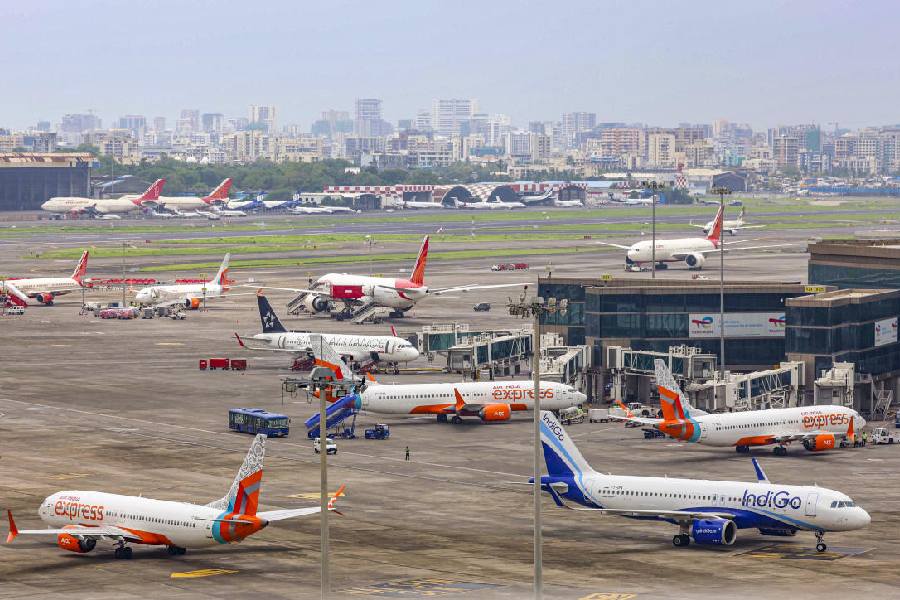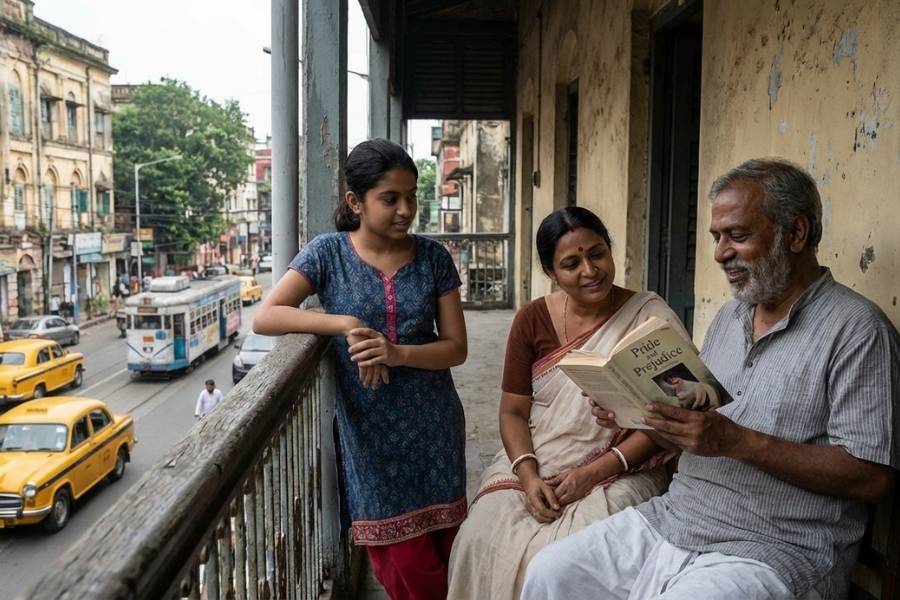 |
| The wreckage of a paramilitary vehicle attacked by the Maoists on Tuesday. (PTI) |
New Delhi, April 6: The Sukma slaughter has laid bare the many faultlines that riddle the government’s offensive against Maoists in a single stunning rap. The most significant of them, perhaps, is its utter failure to inspire local confidence in territories dominated by Maoists.
In the very immediate, the butchery of 76 CRPF jawans was a consequence of zero ground intelligence. The jawans just toddled into a snare and became easy meat for a Maoist platoon nearly 1,000-strong; it couldn’t be that nobody in the area knew of the elaborate arrangements for the mass murder.
A senior Chhattisgarh police officer admitted as much to The Telegraph today, affirming that the site of the massacre is not remote enough for nearby tribal settlements to have been unaware. “We get very little information from tribals, and that is a fact and a huge disadvantage,” the officer said, “and what little we get is often stale or even tainted information, but those are the odds we work against. We have not been able to build networks, we are still deeply mistrusted by people, whereas Maoists have access either because of fear or genuine support.”
Palpably rattled, he pleaded that today’s was an avoidable tragedy, but having said so, he added a chilling note: “Let me tell you it is neither the first nor the last, such disasters are built into the framework of Operation Green Hunt.”
In the months since the government declared its rock jawed intent to confront the armed Maoist challenge, experts have been flagging a whole range of strategic and tactical pitfalls that could drag the operation aground — lack of numbers required to take on the formidable offensive, lack of training and preparedness, lack of familiarity with the terrain, and, most of all, lack of a rounded approach to neutralising what the government calls the biggest internal security threat.
Shortly after Union home minister P. Chidambaram began sabre-rattling the Maoists last year, one of India’s topmost anti-Naxalite strategists, retired BSF director-general Mahendra Kumawat, who also headed the anti-Naxalite taskforce in North Block, had told The Telegraph: “The new crackdown-first-development-later credo of the government, especially the possible use of air power against Maoists, could saddle the nation with Afghanistan and Iraq-like security liabilities.
“Development must go hand in hand with the fight against the Naxals, deprived people in the heartland cannot be expected to wait on their misery until the government is done with its long-haul campaigns. The government is going to bleed and lose more hearts and minds to the Maoists if it forges ahead with a strike policy that brings nothing but bloodshed and disruption to people in the affected zones. That is going to multiply our problems, not solve them.”
Another top security analyst, Ajai Sahni, of the Delhi-based Institute of Conflict Management, had sounded the warning harsher. “An anti-Maoist operation with the current levels of boots on ground and of preparation is stupid. We will be feeding our jawans to the wolves. We have very little idea of the ground, very little information, we have just no idea of what it will take.”
Most of the Dandakaranya forest, the de facto headquarters of the Maoist military operations — nearly 50,000 square kilometres of undulating jungle straddling parts of Bastar (Chhattisgarh), Gadhchiroli (Maharashtra) and Karimnagar (Andhra Pradesh) — has for decades been a forsaken, off-the-map region visited only by profiteers scheming to rip away the wealth of the land and what lies beneath. They knew much about an exploiter state, little about the welfare state.
And for close to 10 years now, the area has remained off limits for the government and its agencies, security or others. It would barely be an exaggeration to say the only “government” the tribals of these forests are acquainted with is the so-called parallel government run by the Maoists — “Janatana Sarkar”, the people’s government.
At the very core of Dandakaranya lies the forbidding Abujmadh wilderness, still a great unknown. For reasons that range from logistical handicaps to concerns over tribal habitat protection, Abujmadh is one of the few pockets of India that has never been surveyed. The forces have very little sense of its lay and topography, and even littler of how the Maoists have positioned themselves. Attempts have been made at aerial mapping but most of Abujmadh is under forest cover, a camouflaged temptress that persistently taunts efforts at unmasking.
This morning’s mayhem is probably proof that many of those alarm bells were well sounded. The plateau jungles of Sukma, close to the Andhra Pradesh border in south Bastar, typify the perils of the government’s headlong leap into confrontation. Most of the area is unmapped and inaccessible; the likelihood is it would have been fairly unfamiliar ground to the ill-fated CRPF jawans venturing in.
Sukma is a gazetted Maoist hotbed, but for that reason, it is also formidably security-ridden. The trouble is that government forces are better watched by Maoists than the other way round. They are the insiders in more ways than one, the government is the outsider.
 |











